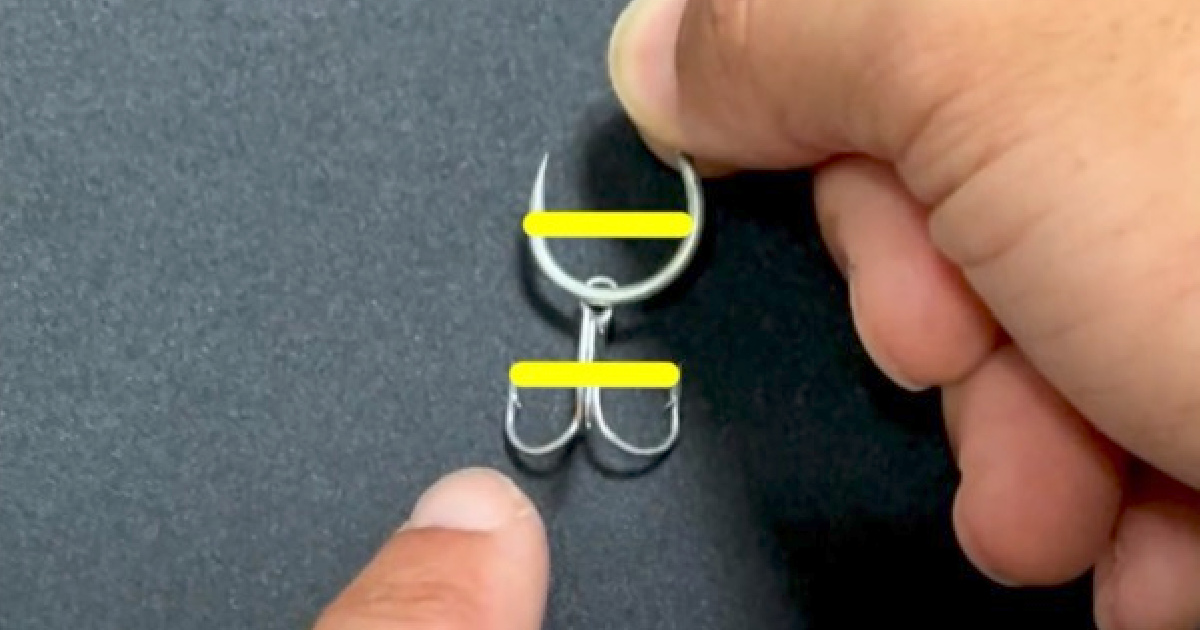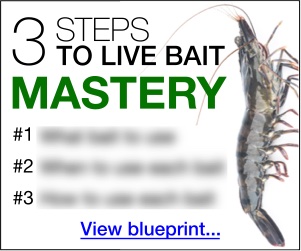Matching The Right Size Single Inline Hooks When Replacing Trebles
- By: Tony Acevedo
- on

Matching the RIGHT SIZE single inline hooks when replacing trebles is crucial!
You don’t want to use hooks that are too small or big.
That can completely change the action of your lures.
Here’s how to choose the right hook size!
Matching The Right Size Single Inline Hooks When Replacing Trebles [VIDEO]
Not a member? Then click here to join the Insider Club today so you can get access to Smart Fishing Spots, discounts on the tackle shown below, and much more.
The best way to make sure you’re switching the right size single inline hook with a treble hook is to match them up side by side.
The gap of the single inline hook should be the same length as the distance between the treble hook from point to point.
No matter the size of treble hooks, this is the general guide to follow when making the switch.
This applies to hard-body lures like topwater baits or subsurface lures.
You don’t want to use a hook that is too small or too big.
It can greatly affect the action of the lure and cost you fish.
Be sure to use this guide as a general rule of thumb so you don’t miss out on the bite.
FINDING THE FISH HELP
In order to help make sure that you are targeting the right areas based on the latest feeding trends and upcoming weather forecasts, make sure to use the following 3 resources because they will save you a ton of time.
1. WEEKEND GAME PLANS (UPDATED WEEKLY)
These regional game plans will show you exactly what types of spots to target in under 10 minutes… just click the video to start, and you’ll be informed on what to do on your next trip.
2. SMART FISHING SPOTS PLATFORM (UPDATED EVERY 15 MINUTES)
This exclusive software literally shows you where the most fish are likely to be feeding based on exactly when you’ll be fishing. It factors in the tides, wind, and weather to help you quickly see which areas to target throughout the day.
3. COMMUNITY REPORTS (LIVE FEED)
The Insider Community platform is what you can use to see what is biting near you, and you can get to know other members who fish in your area. Plus, you can use it to keep a log of your catches so you can use past trips to help predict future catches.
Related categories:
STOP WASTING TIME ON THE WATER!
Do what the “SMART ANGLERS” are doing and join the Insider Club.
Here’s what you’ll receive today when you join:
- Weekly fishing reports and TRENDS revealing exactly where you should fish every trip
- Weekly “spot dissection” videos that walk you through all the best spots in your area
- Exclusive fishing tips from the PROS you can’t find anywhere else
- Everything you need to start catching fish more consistently (regardless if you fish out of a boat, kayak, or land).



 Weekend Game Plan Lessons
Weekend Game Plan Lessons






Great tip Tony. I HATE treble hooks.
Thank you for the great feedback Gregory! They are definitely a pain!
Tony, I wish your simple explanation had been available to me 5 yrs ago! 😄
Through trial and error I EVENTUALLY came to that conclusion & you are spot on. I have had to tweak around on some of the jures due to hooks that get snagged on crank bait lips and those hooks that want to get tangled together, but 1 size reduction on the front hook will usually fix that with no known ill effects.
Haha, it was through trial and error for me as well to come to this conclusion. Now it’s way easier to choose the right size hooks. The size can definitely be tweaked as needed! The only issue you may face is switching hooks on a lure that is supposed to run at a certain depth, or suspend. Then you’ll want to match the weight of the hooks.
That was easy to remember information. I have replaced using circle hooks. Does the eye direction make a difference?
I’m not completely sure what you are asking, BUT….
The replacement hooks for hard baits are called “in line” hooks. The eyes are turned to be in line with the shank of the hook, so that the hook hangs straight from the lure. A standard circle hook usuall has a 90* or perpendicular eye that would make the hook hang sideways – GREATLY effecting the action and successfulness of the lure. The front hook on the lure should hang with the tip forward and the rear hook should hang with the tip backwards.
Here is one of several in-line hook replacement videos on SaltStrong.
https://saltstrongdev.wpengine.com/articles/missing-strikes-with-inline-hooks/
I hope some of that helps! Tight Lines!
Thank you for the feedback William! I wouldn’t recommend using true circle hooks as replacements. Circle hooks are meant for live or dead bait so a fish can run with it and hook itself. If you try to set the hook using circle hooks you will pull the hook right out of the fish’s mouth and miss a hook set. Inline hooks are j-hooks, where the eye of the hook is inline with the hook shank. This keeps the hooks “inline” with the lure.
confused why use a single hook rather than a treble?
Catch and Release, as single inline hooks are WAY safer for the fish and for the fisherman/fisherwoman.
Single hooks are stronger, less damage to the fish, and also have a more secure hold on a fish when hooked. They are also much easier to manage, especially if you have a fish in a net or flopping around in a kayak. Those trebles always find a way to get tangled or get you.
Somewhere in the depths of my mind “somebody” actually used the “weight” of the hooks to determine the inline replacement?
I’ve noticed the proper inline hooks weigh about the same as the treble hooks being replaced and don’t pose a problem. It works.
If you are replacing hooks on a plug that is supposed to have weight balance (such as a suspending plug) the weight of the hook can be important. For the most part, a properly sized inline hook won’t be any heavier or lighter than the treble.
You guys never disappoint. To actually see it makes more sense Thx Tony
Thank you for the great feedback Torry!
Great info as always Tony thanks a bunch👍😉
Thanks Steven!